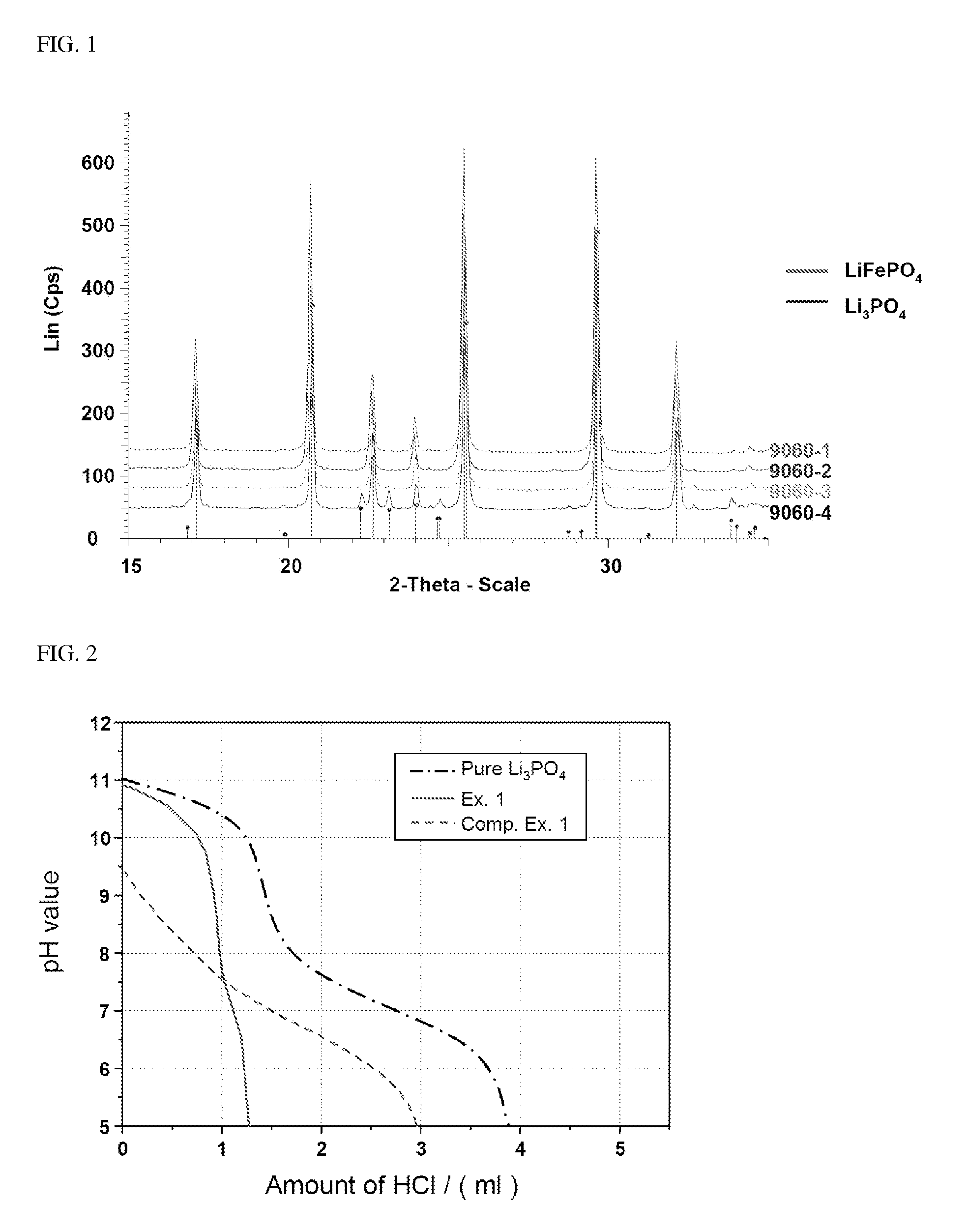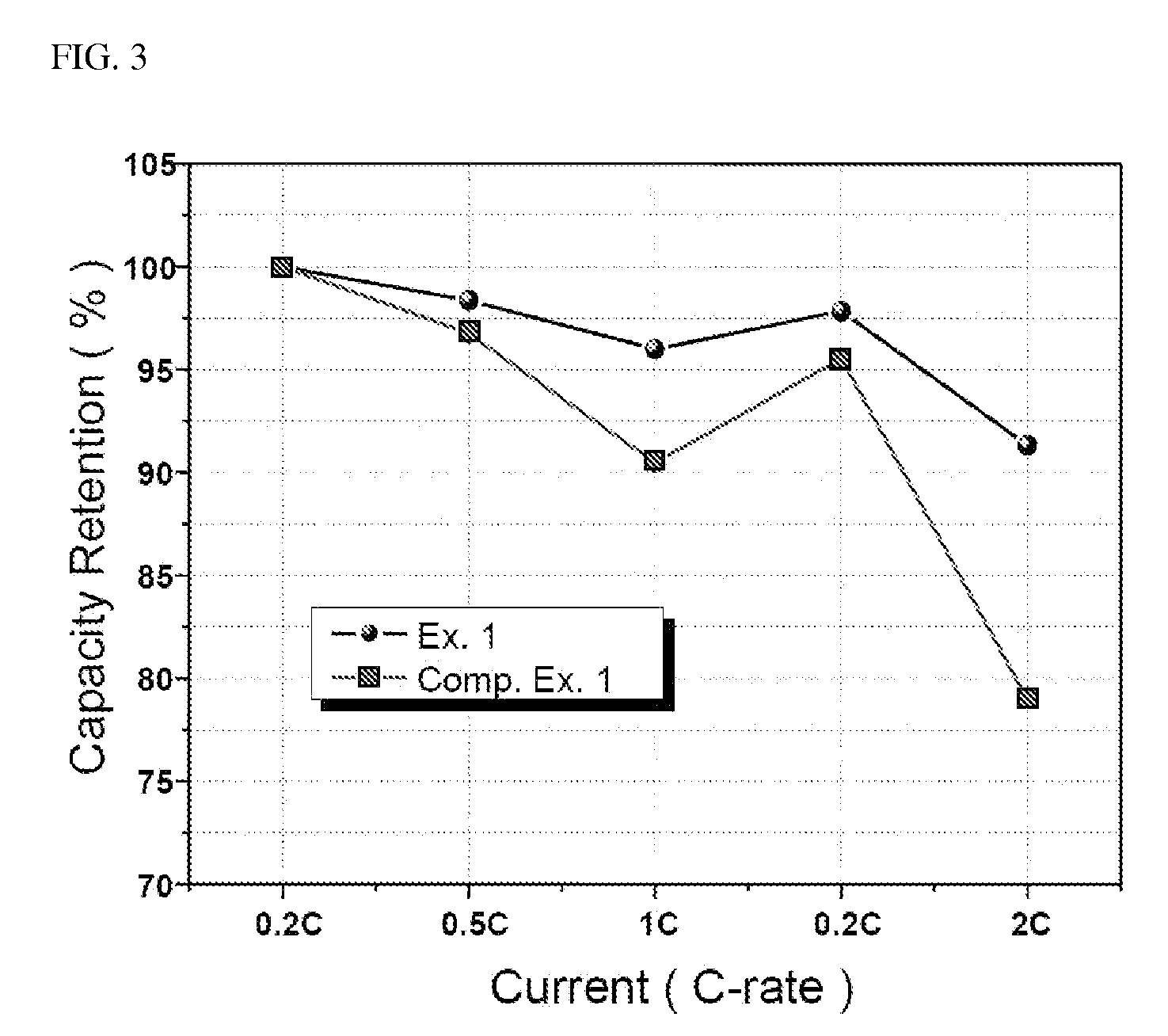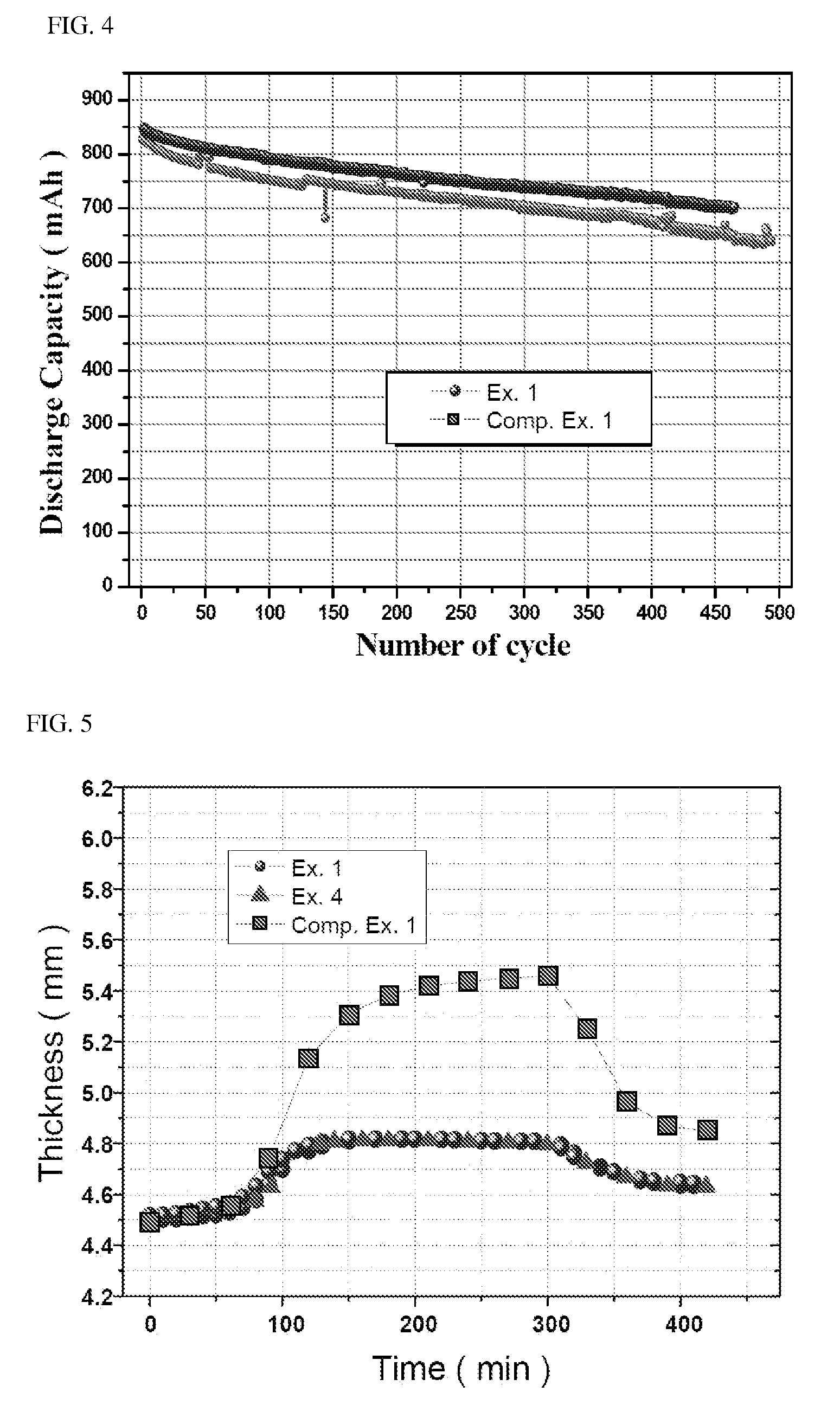Lithium iron phosphate having olivine structure and method for analyzing the same
- Summary
- Abstract
- Description
- Claims
- Application Information
AI Technical Summary
Benefits of technology
Problems solved by technology
Method used
Image
Examples
experimental example 1
Content Measurement of Li2CO3 and Li3PO4 (pH Titration)
[0091]First, 10 g of the lithium iron phosphate particles prepared in Example 2 to 6 and Comparative Example 1 was stirred in 100 ml of distilled water for 5 minutes, followed by filtering. Then, a 0.1M HCl solution was added to the resulting filtrate, the mixture was subjected to pH titration with stirring and pH was recorded as a function of time. This experiment was performed until pH reached 3 or lower, and flow rate was suitably determined so that titration took about 20 to 30 minutes. The content of water-soluble base was calculated by the amount of acid used, until pH reached 5 or lower and the water-soluble base was characterized by pH profile behaviors.
[0092]The results thus obtained are shown in Table 1 below, and a graph showing pH variation as a function of the amount of HCl added for Example 1 and Comparative Example 1 and pure Li3PO4 is shown in FIG. 2.
TABLE 1Amount detectedInitial pHMain ingredient(wt %)Ex. 111.30...
experimental example 2
Confirmation of Presence of Li3PO4 (Co X-Ray Diffraction)
[0094]In order to confirm the presence of Li3PO4, LiFePO4 prepared in the several Examples was analyzed by Co X-ray and the results thus obtained are shown in FIG. 1.
[0095]As can be seen from FIG. 1, although LiFePO4 synthesized under supercritical and super / subcritical conditions contains impurities, only Li3PO4 is formed. Cu X-ray cannot accurately confirm whether or not LiFePO4 contains impurities due to noise caused by Fe. Accordingly, the structure of impurities can be accurately confirmed by Co X-ray analysis, as shown in FIG. 1.
[0096]Impurities may remain in the conventional synthesis of LiFePO4, since an excess of compounds containing Li and P is used for the hydrothermal reaction. However, as can be seen from XRD analysis in FIG. 1, in supercritical synthesis, only Li3PO4 is formed or Li2CO3 is formed in an extremely small amount. On the other hand, in accordance with the method (e.g., solid-phase method) where crysta...
experimental example 3
Characteristic Tests
[0097]Secondary batteries were fabricated using the lithium iron phosphate of Examples 1 and 2 and Comparative Example 1 as cathode active materials and were tested for properties such as rate properties or high temperature properties.
[0098]Specifically, 90% by weight of lithium iron phosphate as a cathode active material, 5% by weight of Super-P as a conductive material and 5% by weight of PVdF as a binder were added to NMP (N-methyl-2-pyrrolidone) to prepare a cathode mixture slurry. The cathode mixture slurry was coated on one surface of an aluminum foil, followed by drying and pressing, to fabricate a cathode.
[0099]95% by weight of carbon as an anode active material, 1.5% by weight of Super-P as a conductive material and 3.5% by weight of PVdF as a binder were added to NMP as a solvent, to prepare an anode mix slurry. The anode mix slurry was coated on one surface of an aluminum foil, followed by drying and pressing, to fabricate an anode.
[0100]The cathode an...
PUM
 Login to View More
Login to View More Abstract
Description
Claims
Application Information
 Login to View More
Login to View More - R&D Engineer
- R&D Manager
- IP Professional
- Industry Leading Data Capabilities
- Powerful AI technology
- Patent DNA Extraction
Browse by: Latest US Patents, China's latest patents, Technical Efficacy Thesaurus, Application Domain, Technology Topic, Popular Technical Reports.
© 2024 PatSnap. All rights reserved.Legal|Privacy policy|Modern Slavery Act Transparency Statement|Sitemap|About US| Contact US: help@patsnap.com










